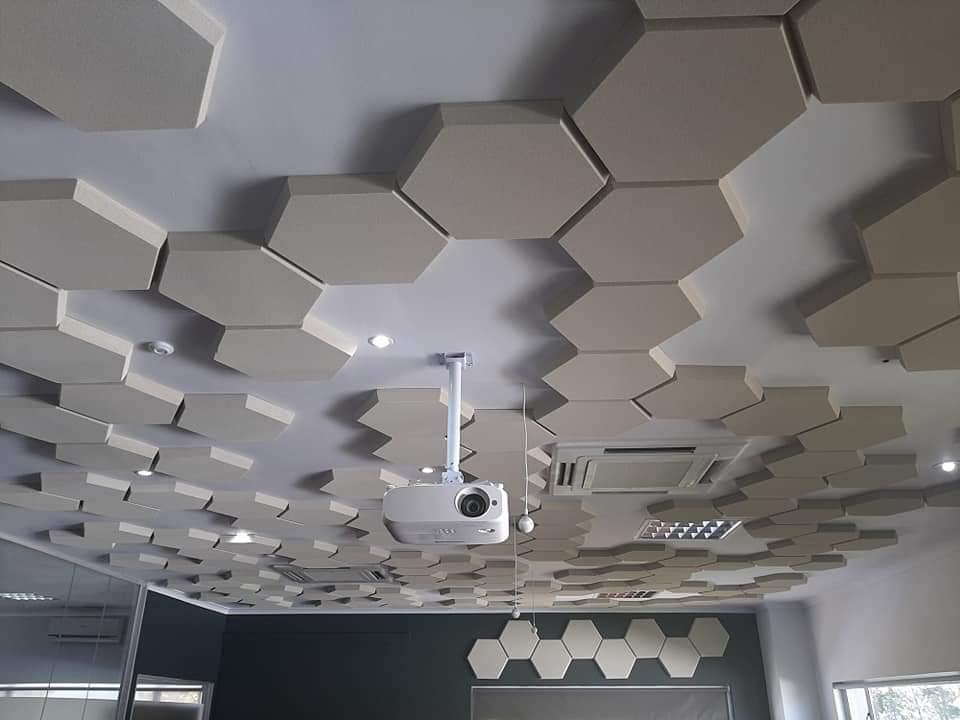
The Complete Guide to Acoustic Foam Panels: Transform Your Space with Superior Sound Control
Struggling with Poor Sound Quality? Here’s Your Solution
If you're tired of echoey Zoom or MS Teams calls, muffled audio in your home studio, or noise distractions in your office, acoustic foam panels offer a scientifically proven solution. Designed to absorb sound waves, these panels significantly improve room acoustics, eliminate reverberation, and enhance speech clarity—making them ideal for both professional and residential spaces.
What Are Acoustic Foam Panels?
Acoustic foam panels are lightweight, porous materials—typically made from polyurethane or polyester foam—designed to absorb mid-to-high frequency sound waves. Their open-cell structure traps sound energy and dissipates it as heat, reducing echo, flutter, and reflected sound.
They are not the same as soundproofing materials (which block sound transmission) but are essential for acoustic treatment—the process of improving sound clarity within a space.
Absorbers vs. Diffusers: Understanding Acoustic Treatment
To optimise acoustics, professionals use two key elements:
- Sound Absorbers: These include acoustic foam and polyester panels that reduce the intensity of reflected sound by absorbing it. Best for controlling mid- and high-frequency reverberation.
- Sound Diffusers: These scatter sound waves to maintain a natural ambiance without echoes. They help balance sound energy throughout the room.
- Pro Tip: Use a combination of absorbers and diffusers for a balanced acoustic environment, especially in larger or multi-purpose rooms.
The Science of Sound Reflection and Why It Matters
Sound behaves predictably when it hits surfaces. In untreated rooms, reflections cause several acoustic issues:
- Flutter Echoes – Rapid bouncing between parallel walls
- Standing Waves – Peaks and dips in volume due to wave interference
- Room Modes – Bass build-up at certain frequencies, creating boominess
- Comb Filtering – Harsh, phase-cancelled frequencies that distort audio
Installing high-quality acoustic foam panels disrupts these reflections, ensuring cleaner, more accurate sound.
Benefits of Acoustic Foam Panels
- Reduces Echo and Reverb – Delivers clear, defined audio in any space
- Controls Frequency Build-up – Minimises standing waves and room modes
- Improves Speech Intelligibility – Ideal for boardrooms, classrooms, and meeting rooms
- Enhances Audio Recording – A must for podcasters, musicians, and content creators
- Boosts Listening Experience – Elevates audio quality in home theatres and gaming rooms
- Creates a Comfortable Acoustic Environment – Reduces listener fatigue and stress
Where to Install Acoustic Foam for Maximum Effectiveness
Strategic placement is critical. Target the primary reflection points where sound bounces back toward your ears:
- Behind and beside speakers or monitors
- Opposite your listening or recording position
- On the ceiling above microphones or desks
- Room corners (for bass traps)
- Near doors or windows to reduce external noise bleed
Top Applications for Acoustic Foam Panels
- Recording Studios – Capture clean vocals and instrumentals
- Home Offices – Minimise distractions and improve video call clarity
- Podcast & Streaming Setups – Enhance voice warmth and reduce ambient noise
- Home Theatres – Create immersive cinematic sound
- Gaming Rooms – Improve directional sound and reduce reflections
- Conference Rooms & Schools – Foster focused, echo-free environments
How to Install and Maintain Acoustic Foam Panels
- Installation Options:
- Hot Glue applied with glue gun – For permanent mounting
- Velcro strips or command strips (double sided tape) – Ideal for rental properties or temporary setups
- Framed or peg-mounted panels – For design-forward spaces
- Maintenance Tips:
- Vacuum gently to remove dust every few weeks
- Avoid humid areas to prevent material degradation
- Replace panels every 5–10 years depending on usage and environment
Frequently Asked Questions (FAQs)
- Can acoustic foam completely soundproof a room?
No. Acoustic foam improves sound within a room. To block sound transmission, you need soundproofing materials like mass-loaded vinyl, insulation, or double-layered drywall.
- What’s the difference between cheap and high-quality foam?
High-quality foam offers:
- Greater density and sound absorption
- Fire resistance
- Longevity (5–10 years vs. 1–2 years for cheap alternatives)
- Is it safe to install foam in rental spaces?
Yes. Use removable adhesives like Velcro or command strips that don’t damage walls.
Why Choose Hush Echo Acoustic Foam Panels?
At Hush Echo, our panels are:
- Locally manufactured in South Africa
- Made from high-density, fire-retardant foam
- Designed for maximum sound absorption
- Backed by industry knowledge and exceptional service
Whether you're looking for wedge, pyramid, or bass trap panels, we offer acoustic solutions for every application and budget.
Transform Your Space Today
Acoustic foam panels are essential for anyone serious about sound quality. Whether creating a recording studio, home office, or entertainment space, proper acoustic treatment dramatically improves both sound quality and room comfort.
Success comes from understanding your acoustic challenges and strategically placing sound-absorbing materials where they'll be most effective. Ready to experience the difference? Explore our range of professional acoustic foam panels designed for every application and budget.
Take action today and transform your space with superior sound control.
